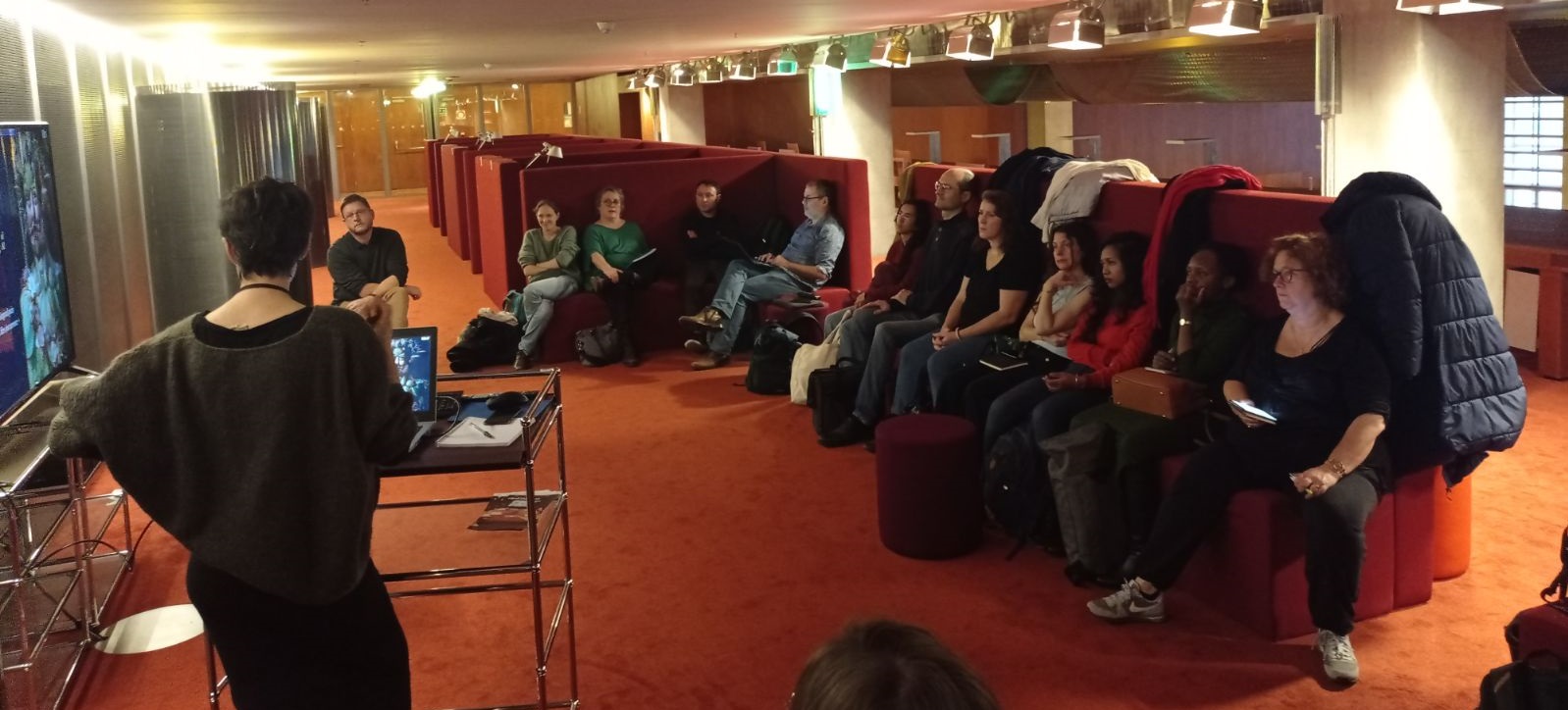Jean-Léo Léonard & Samia Naïm (eds)
Jean-Léo Léonard (IUF & Université Paris 3, UMR 7018) & Samia Naïm (eds)
Base articulatoire arrière / Backing and Backness
Phonological typology is a leading field in empirical linguistics today. It owes this privilege to a rich tradition of theoretical research on the sound patterns of language, and to a number of significant cross-linguistic comparative studies, based on databases such as UPSID, the WALS, etc. However, many domains of inquiry still await more detailed study within a typological framework, such as postvelar articulations, gesture coordination of gutturals and glottals within onsets and nuclei, emphatic articulations, the nature of breathiness and creakiness – in other words, voice quality and its sources and function in different languages. The laryngealist theory for proto-Indo-European has seldom been revisited on cross-linguistic grounds, and most consonant inventories defined nowadays as typologically creaky or breathy were until recently considered to be “glottalized” or “aspirated”. Discrete postvelar segments and/or glottalic features, although rare in European languages, do occur in a wide array of languages and language families, including Afro-Asiatic, Caucasian, Mayan, Totonacan, Altaic, Chukchi-Kamchakan, etc. Scholars such as André Martinet or Hagège & Haudricourt used to point out in their comparative or synchronic essays that languages tend towards what they called an “articulatory basis”; such as a fronting or palatal tendency, e.g. in modern Indo-European languages. This hypothesis is typically one that should be scrutinized, focusing more attention on languages that display tendencies towards a “back(ing) articulatory basis”, in order not only to examine what happens in the postvelar articulatory area and the glottis, but also to challenge feature theory – we prefer here to use postvelar instead of prevelar, in terms of continuity within the oral cavity, from the lips to the epiglottis.
This volume was originally designed as the proceedings from the Paris International Conference on Backing & Backness in Phonology (Institut Universitaire de France – Paris 3 UMR 7018 & LACITO-CNRS), may 2012. It progressively became an essay on Backness & Resonance, from a theoretical as much as from an empirical standpoint. The reader will be provided with plenty of linguistic data on a wide array of unrelated languages, critical insights on phonological backness, and a polyphony of theoretical and descriptive models, far beyond from a mere survey of data.

Contents / Sommaire
I. Théorie, modélisation, épistémologie / Theory, models, epistemology
Chris Golston & Wolfgang Kehrein, A prosodic theory of laryngeal timing
Joaquim Brandão de Carvalho, Why there is no backness. The case for dismissing both [coronal] and [dorsal]Jean-Pierre Angoujard, Pourquoi il n’y a pas de pharyngalisation
Daniel Petit, La théorie des laryngales et la reconstruction indo-européenne
II. Typologie phonologique: granularité et complexité / Typological Complexity (or fine grained typology)
John Colarusso, The Typology of the Gutturals
Geoffrey Khan, Phonological Emphasis in North-Eastern Neo-Aramaic
Samia Naïm & Janet Watson, La corrélation occlusive laryngovélaire dans des variétés néo-arabes et sud-arabiques
III. Etudes de cas, approches empiriques / Case studies, empirical approaches
Marc-Antoine Mahieu, Distribution, réalisation et comportement morphophonologique des uvulaires dans les dialectes inuit
Jean-Léo Léonard, Gutturales et glottales comme indices pour une théorie de la racine en tchouktche-kamtchadal
Alain Kihm, De l’influence des gutturales perdues sur la formation des pluriels internes en maltais
Enrique L. Palancar, Aspiration in Northern Otomi and the relic of an old fortis/lenis contrast
IV. Perspectives méthodologiques / Methodological prospects
Barry Heselwood, Laryngeal closed quotient values in relation to the majhūr-mahmūs distinction in traditional Arabic grammar
Jean Léo Léonard, Cédric Gendrot & Gilles Polian, Laryngeal & Velar Correlates in Tseltal. A Quantum of variation
A. Colazo-Simon & B. Gautheron, Méthode de collecte de données acoustiques et physiologiques pour les variétés espagnole et maya parlées au Yucatán, Mexique
Antonia Colazo-Simon, Laryngalisation et tonie vocalique en maya
Léonard, Jean Léo & Naïm, Samia (eds), 2013, Base articulatoire arrière / Backing and Backness, Lincom (Studies in Phonology 01), 278 p.
[ISBN 9783862884636]
Publié début décembre 2013

